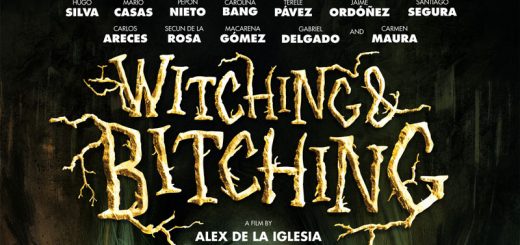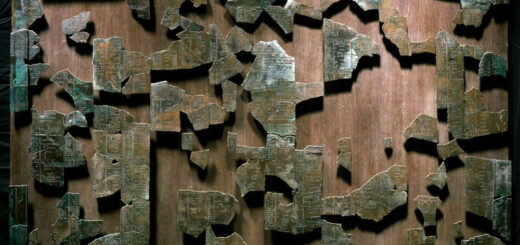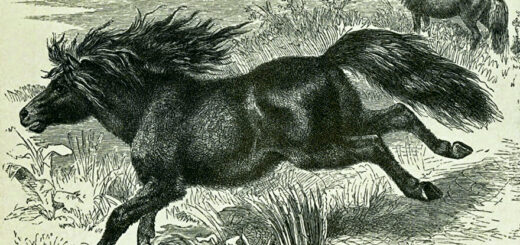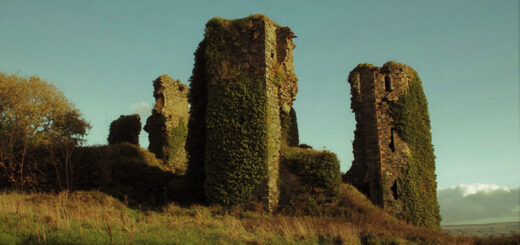Astral and aura colors and what they mean
Aura colors reflect our actual states of being on mental, emotional and physical levels. The human aura is a complex yet flexible and managebel part of our body-mind-emotion-energy homeostase, of which the astral and mental part “speak” in color-language.
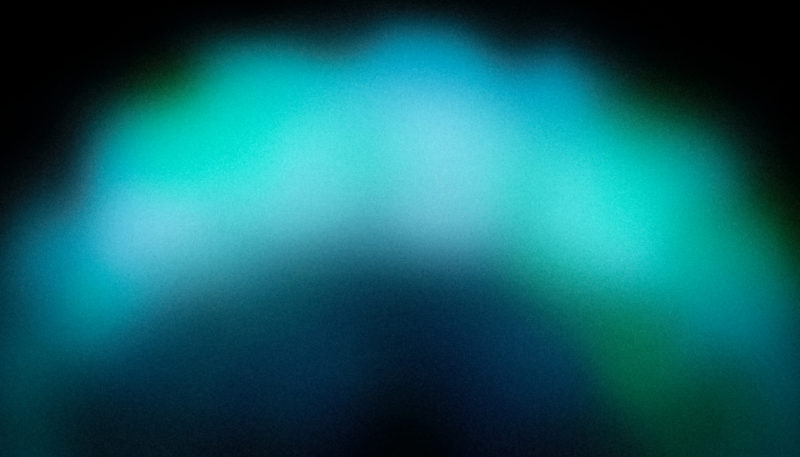
The ethers or subtle energy fields react on mental and emotional states and the dominance or absence of obsessions or obsessors in color language.
The etheric double is the only interface connecting the physical body with the astral and mental and noetic (intuitive) part. When someone dies this etheric double is no longer there and the disconnecting of this life-energy field of the body from the astral layer is technically known as the physical death.
Many people can learn to see the aura, or at least the etheric double by training the peripherical gaze and using a greyish background with a certain amount of light. Aura-goggles or aura glasses use the Kilner-glas formula. They work especially well on sunny beaches with whitish sand and can show the energy field surrounding people to almost anyone.
William Walker Atkinson on the meaning of aura colors
The term “astral,” so frequently employed by all occultists, is difficult to explain or define except to those who have pursued a regular course of study in occult science. For the purpose of the present consideration, it is enough to say that over and above the ordinary physical sense plane there is another and more subtle plane, known as the Astral Plane.
Every human being possesses the innate and inherent faculty of sensing the things of this astral plane, by means of an extension or enlargement of the powers of the ordinary senses, so to speak. But, in the majority of persons in the present stage of development, these astral senses are lying dormant, and only here and there do we find individuals who are able to sense on the astral plane, although in the course of evolution the entire race will be able to do so, of course.
The colors of the human aura, mentioned in the preceding two chapters, and which arise from the various mental and emotional states, belong to the phenomena of the astral plane, and hence bear the name of “the astral colors.” Belonging to the astral plane, and not to the ordinary physical plane, they are perceived only by the senses functioning on the astral plane, and are invisible to the ordinary physical plane sight. But, to those who have developed the astral sight, or clairvoyance, these colors are as real as are the ordinary colors to the average person, and their phenomena have been as carefully recorded by occult science as have the physical plane colors by physical science.
The fact that to the ordinary physical senses they are invisible, does not render them any the less real. Remember, in this connection, that to the blind man our physical colors do not exist. And, for that matter, the ordinary colors do not exist to “color blind” persons. The ordinary physical plane person is simply “color blind” to the astral colors—that’s all.
Aura colors on the astral plane
On the astral plane each shade of mental or emotional state has its corresponding astral color, the latter manifesting when the form appears. It follows then, of course, that when once the occultist has the key to this color correspondence, and thus is able to perceive the astral colors by means of his astral vision, he also is able to read the mental and emotional states of any person within the range of his vision, as easily as you are now reading the printed words of this book.
Before proceeding to a consideration of the list of astral colors in the human aura, I wish to call your attention to a slight variation in the case of the prana-aura, of which I have spoken in our last chapter. I have stated therein that the prana-aura is colorless like a diamond or clear water. This is true in the average case, but in the case of a person of very strong physical vitality or virility, the prana-aura takes on, at times, a faint warm pink tinge, which is really a reflection from the red astral color, of the meaning of which color you shall now learn.
Like their physical plane counterparts, all the astral colors are formed from three Primary Colors, namely (1) Red; (2) Blue; and (3) Yellow. From these three primary colors, all other colors are formed. Following the Primary Colors, we find what are known as the Secondary Colors, namely: (1) Green, derived from a combination of Yellow and Blue; (2) Orange, formed from a combination of Yellow and Red; and (3) Purple, formed from a combination of Red and Blue. Further combinations produce the other colors, as for instance, Green and Purple form Olive; Orange and Purple form Russet; Green and Orange form Citrine.
Black is called an absence of color, while White is really a harmonious blending of all colors, strange as this may appear to one who has not studied the subject. The blending of the Primary Colors in varied proportions produce what is known as the “hues” of color. Adding white to the hues, we obtain “tints;” while mixing Black produces “shades.” Strictly speaking Black and White are known as “neutral” colors.
Now for the meaning of the astral colors—that is, the explanation of the mental or emotional state represented by each. I ask that the student familiarize himself with the meaning of the Primary Colors and their combinations. A clear understanding of the key of the astral colors is often an aid in the development of astral sight.
Key to the astral colors
RED. Red represents the physical phase of mentality. That is to say, it stands for that part of the mental activities which are concerned with physical life. It is manifested by the vitality of the body, and in other hues, tints and shades, is manifested by passions, anger, physical cravings, etc. I shall describe the various forms of Red manifestation, a little later on.
BLUE. Blue represents the religious, or spiritual, phase of mentality. That is to say, it stands for that part of the mental activities which are concerned with high ideals, altruism, devotion, reverence, veneration, etc. It is manifested, in its various hues, tints, and shades, by all forms of religious feeling and emotion, high and low, as we shall see as we proceed.
YELLOW. Yellow represents the intellectual phase of mentality. That is to say, it stands for that part of the mental activities which are concerned with reasoning, analysis, judgment, logical processes, induction, deduction, synthesis, etc. In its various hues, tints and shades, it is manifested by the various forms of intellectual activity, high and low, as we shall see as we proceed.
WHITE. White stands for what occultists know as Pure Spirit, which is a very different thing from the religious emotion of “spirituality,” and which really is the essence of the ALL that really is. Pure Spirit is the positive pole of Being. We shall see the part[28] played by it in the astral colors, as we proceed.
BLACK. Black stands for the negative pole of Being—the very negation of Pure Spirit, and opposing it in every way. We shall see the part played by it in the astral colors as we proceed.
The various combinations of the three Astral Primary Colors are formed in connection with Black and White as well as by the blending of the three themselves. These combinations, of course, result from the shades of mental and emotional activity manifested by the individuality, of which they are the reflection and the key.
The combination and blending of the astral colors

Bleuish and purple aura colors.
The combinations and blending of the astral colors, however, are numberless, and present an almost infinite variety. Not only is the blending caused by the mixing of the colors themselves, in connection with black and white, but in many cases the body of one color is found to be streaked, striped, dotted or clouded by other colors. At times there is perceived the mixture of two antagonistic color streams fighting against each other before blending. Again we see the effect of one color neutralizing another.
In some cases great black clouds obscure the bright colors beneath, and then darken the fierce glow of color, just as is often witnessed in the case of a physical conflagration. Again, we find great flashes of bright yellow, or red, flaring across the field of the aura, showing agitation or the conflict of intellect and passion.
The average student, who has not developed the astral vision, is inclined to imagine that the astral colors in the human aura present the appearance of an egg-shaped rainbow, or spectrum, or something of that sort. But this is a great mistake. In the first place, the astral colors are seldom at rest, for all mental and emotional activity is the result of vibration, change, and rhythmic motion. Consequently, the colors of the aura present a kaleidoscopic appearance, of constant change of color, shape and grouping—a great electrical display, so to speak, constantly shifting, changing, and blending.
Great tongues of flamelike emanations project themselves beyond the border of the aura, under strong feeling or excitement, and great vibratory whirls and swirls are manifested. The sight is most fascinating, although somewhat[30] terrifying at first. Nature is wise in bestowing the gift of astral vision only gradually and by almost imperceptible stages of advance. There are many unpleasant, as well as pleasant, sights on the Astral Plane.
The astral color groups explained
Remembering, always, the significance of the three primary colors on the astral plane, let us consider the meaning of the combinations, shades, hues, and tints of these colors.
THE RED GROUP. In this group of astral colors seen in the human aura, we find strongly in evidence the clear bright red shade, similar to that of fresh, pure arterial blood as it leaves the heart, filled with pure material freshly oxygenated. This shade, in the aura, indicates health, life-force, vigor, virility, etc., in pure and untainted form. The aura of a healthy, strong child shows this shade of color very plainly and strongly.
Strong, pure natural emotions, such as friendship, love of companionship, love of physical exercise, healthy clean sports, etc., are manifested by a clear clean shade of red. When these feelings become tainted with selfishness, low motives, etc., the shade grows darker and duller. Love of low companionship, unclean sports, or selfish games, etc., produce an unpleasant muddy red shade.
A shade of red, very near to crimson, is the astral color of Love, but the tint and shade varies greatly according to the nature of this form of emotional feeling. A very high form of love, which seeks the good of the loved one, rather than the satisfaction of oneself, manifests as a beautiful rose tint—one of the most pleasing of the astral tints, by the way. Descending in the scale, we find the crimson shade becoming darker and duller, until we descend to the plane of impure, sensual, coarse passion, which is manifested by an ugly, dull, muddy crimson of a repulsive appearance, suggesting blood mixed with dirty earth or barnyard soil.
A peculiar series of red shades are those manifesting anger in its various forms, from the vivid scarlet flashes of anger color, arising from what may be called “righteous indignation,” down the scale to the ugly flashes of deep, dull red, betokening rage and uncontrolled passion. The red of anger generally shows itself in flashes, or great leaping flames, often accompanied by a black background, in the case of malicious hate, or by a dirty, greenish background when the rage arises from jealousy, or envy. The color of avarice is a very ugly combination of dull, dark red, and a dirty ugly green. If persons could see their own astral colors accompanying these undesirable mental states, the sight would perhaps so disgust them with such states as to work a cure. At any rate, they are most disgusting and repulsive to the occultist who beholds them in the human aura, and he often wonders why they do not sicken the person manifesting them—they often do just this thing, to tell the truth.
THE YELLOW GROUP. In this group of astral colors seen in the human aura we find as many varieties as we do in the red group. Yellow, denoting intellect, has many degrees of shade and tint, and many degrees of clearness.
An interesting shade in this group is that of Orange, which represents different forms of “pride of intellect,” intellectual ambition, love of mastery by will, etc. The greater degree of red in the astral orange color, the greater the connection with the physical or animal nature. Pride and love of power over others, has much red in its astral color, while love of intellectual mastery has much less red in its composition.
Pure intellectual attainment, and the love of the same, is manifested by a beautiful clear golden yellow. Great teachers often have this so strongly in evidence, that at times their students have glimpses of a golden “halo” around the head of the teacher. Teachers of great spirituality have this “nimbus” of golden yellow, with a border of beautiful blue tint, strongly in evidence.
The paintings of the great spiritual teachers of the race usually have this radiance pictured as a “halo,” showing a recognition of the phenomenon on the part of the great artists. Hoffman’s celebrated painting of the Christ in the Garden of Gethsemane shows this nimbus so accurately depicted that the occultist is convinced that this artist must have actually witnessed a similar scene in the astral light, so true to the astral facts are its details. The images of the Buddha also show this radiance.
The rich golden shades of intellectual yellow are comparatively rare, a sickly lemon color being the only indication of intellectual power and found in the aura of the great run of persons. To the sight of the occultist, employing his power of astral vision, a crowd of persons will manifest here and there, at widely separated points, the bright golden yellow of the true intellect, appearing like scattered lighted candles among a multitude of faintly burning matches.
THE GREEN GROUP. This is a peculiar group, consisting as of course it does of various combinations of blues and yellows, tinted and shaded by white or black. Even skilled occultists find it very difficult to account for the fact of certain green shades arising from the spiritual blue and the intellectual yellow—this is one of the most obscure points in the whole subject of the astral colors, and none but the most advanced occultists are able to explain the “why” in some instances. To those who are fond of analysis of this kind, I will drop the following hint, which may help them out in the matter, viz. The key is found in the fact that Green lies in the centre of the astral spectrum, and is a balance between the two extremes, and is also influenced by these two extremes in a startling manner.
A certain restful green denotes love of nature, out of door life, travel in the country, etc., and also, slightly differing in tint, the love of home scenes, etc. Again, a clear beautiful lighter tint of green indicates what may be called sympathy, altruistic emotion, charity, etc. Again, illustrating variety in this group of astral colors, another shade of green shows intellectual tolerance of the views of others. Growing duller, this indicates tact, diplomacy, ability to handle human nature, and descending another degree or so blends into insincerity, shiftiness, untruth, etc. There is an ugly slate-colored green indicating low, tricky deceit—this is a very common shade in the colors of the average aura, I am sorry to say. Finally, a particularly ugly, muddy, murky green indicates jealousy and kindred feelings, envious malice, etc.
THE BLUE GROUP. This interesting group of astral colors represents the varying forms and degrees of religious emotion, “spirituality,” etc. The highest form of spiritual, religious feeling and thought is represented by a beautiful, rich, clear violet tint, while the lower and more gross phases of religious emotion and thought are represented by the darker and duller hues, tints, and shades until a deep, dark indigo is reached, so dark that it can scarcely be distinguished from a bluish black. This latter color, as might be expected, indicates a low superstitious form of religion, scarcely worthy of the latter name. Religion, we must remember, has its low places as well as its heights—its garden grows the rarest flowers, and at the same time the vilest weeds.
High spiritual feelings—true spiritual unfoldment—is indicated by a wonderfully clear light blue, of an unusual tint, something akin to the clear light blue of the sky on a cool autumn afternoon, just before sunset. Even when we witness an approach to this color in Nature, we are inspired by an uplifting feeling as if we were in the presence of higher things, so true is the intuition regarding these things.
Morality, of a high degree, is indicated by a series of beautiful shades of blue, always of a clear inspiring tint. Religious feeling ruled by fear, is indicated by a shade of bluish gray. Purple denotes a love of form and ceremony, particularly those connected with religious offices or regal grandeur of a solemn kind. Purple, naturally, was chosen as the royal color in the olden days.
THE BROWN GROUP. The brown group of astral colors represents desire for gain and accumulation, ranging from the clear brown of industrious accumulation, to the murky dull browns of miserliness, greed and avarice. There is a great range in this group of brown shades, as may be imagined.
THE GRAY GROUP. The group of grays represents a negative group of thought and emotions. Gray represents fear, depression, lack of courage, negativity, etc. This is an undesirable and unpleasant group.
BLACK. Black, in the astral colors, stands for hatred, malice, revenge, and “devilishness” generally. It shades the brighter colors into their lower aspects, and robs them of their beauty. It stands for hate—also for gloom, depression, pessimism, etc.
WHITE. White is the astral color of Pure Spirit, as we have seen, and its presence raises the degree of the other colors, and renders them clearer. In fact, the perception of the highest degree of Being known to the most advanced occultist is manifested to the highest adepts and masters in the form of “The Great White Light,” which transcends any light ever witnessed by the sight of man on either physical or astral plane—for it belongs to a plane higher than either, and is absolute, rather than a relative, white. The presence of white among the astral colors of the human aura, betokens a high degree of spiritual attainment and unfoldment, and when seen permeating the entire aura it is one of the Signs of the Master—the token of Adept-ship.
The text above is partly adopted for blog from the Chapter “THE PROTECTIVE AURA of The Human Aura: Astral Colors and Thought Forms” by Swami Panchadasi one of the pseudonims of William Walker Atkinson (December 5, 1862 – November 22, 1932) an attorney, merchant, publisher, and author, as well as an occultist and an American pioneer of the New Thought movement.
Aura colors and emotions-plate by Annie Besant and Charles W. Leadbeater, taken from their book Thought Forms (1901, 1905)

You may also like to read:
Thought forms – Thoughts condensed on purpose or by accident
Aura protection – How to protect your energy field from negative influences
You may also like to read:
Poltergeist
Aura protection – How to protect your energy field from negative influences
Thought forms – Thougths condensed on purpose or by accident
Allan Kardec: Life after death as a science…


